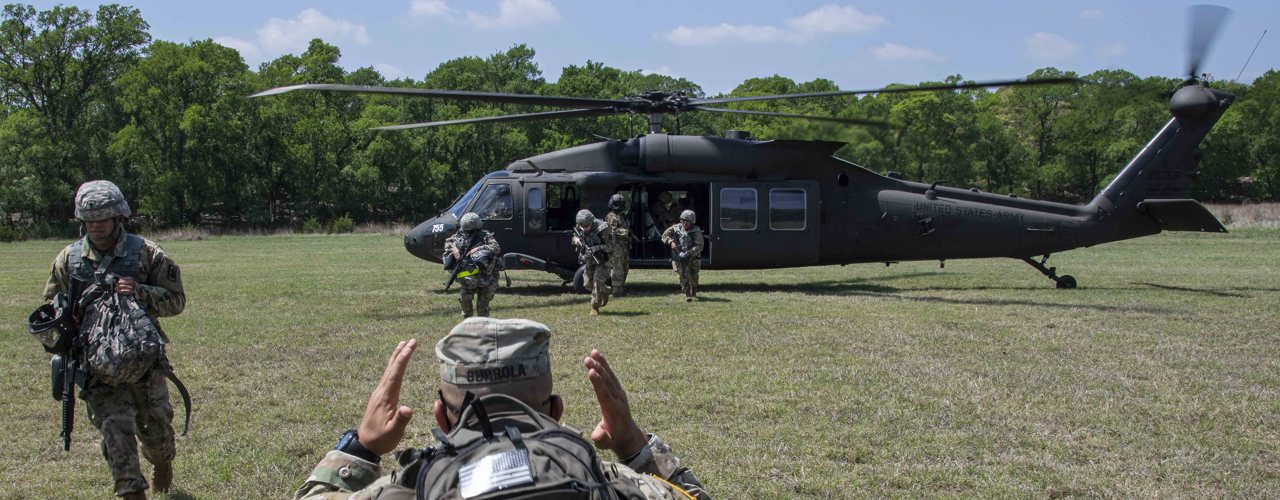

New Camp Bullis Sentinel Landscape Seeks to Strengthen Military Readiness, Natural Resource Conservation, and Agricultural Productivity
San Antonio, Texas – One of the nation’s newest Sentinel Landscape recognitions was awarded to the area surrounding Joint Base San Antonio-Camp Bullis. The national recognition, the first ever in Texas, will open significant new financial resources to protect military readiness, enhance agricultural productivity, and advance conservation in a multi-county region.
Joint Base San Antonio (JBSA) provides training opportunities for 266 mission partners. “The 266 missions at JBSA contribute over $41 billion to the Texas economy annually,” said Diane Rath, Executive Director of the Alamo Area Council of Governments (AACOG). “Every medic from all four branches of services train at Camp Bullis. In addition, the field training for many of the missions cannot be duplicated.”
Staff from AACOG, Texas A&M Natural Resources Institute, and Hill Country Alliance came together in 2020 to create a partnership and explore opportunities to expand conservation funding for the area. This area encompasses ranch lands, spring-fed rivers, the Edwards Aquifer Recharge and Contributing Zones, all within one of the fastest-growing regions in the country.
Collaborative work will focus on supporting private landowners with technical and financial resources that align with their stewardship goals. “Thoughtful land stewardship provides rippling benefits, not only for the private landowner but for society and future generations,” affirmed Daniel Oppenheimer, Hill Country Alliance Land Program Manager and Camp Bullis Sentinel Landscape Partnership Coordinator. “Good land stewardship enhances water quality and quantity, mitigates floods and drought, supports agricultural productivity, and improves wildlife habitat. We want to help ranchers keep ranching.”
The incredible pace of growth emanating from San Antonio and the I-35 corridor is causing the rapid loss of agricultural lands, increasing night-sky light pollution, loss of spring flow and aquifer drawdowns. Local partners submitted a Sentinel Landscape application in August of 2020 with a goal of addressing several of these challenges.
Founded in 2013 through a collaboration of the US Departments of Agriculture, Interior and Defense, the Sentinel Landscape Partnership works collaboratively with state and local governments, non-governmental organizations, and private landowners to strengthen military readiness, natural resource conservation, and agricultural productivity. The Camp Bullis Sentinel Landscape Partnership will collaborate to access untapped public and private funds to support private landowners around the military installation.
Ultimately, nearly 40 partner organizations have joined the effort to address these cross-cutting issues. “Military training and national defense, along with energy and agriculture, are important economic drivers in our state,” said Dr. Roel Lopez, Director of the Texas A&M Natural Resources Institute. “A key ingredient to sustaining these economies includes the continued stewardship of Texas farms and ranches. Farmers and ranchers make good neighbors to a military installation, helping safeguard the best training environments for our men and women in uniform.”
The Partnership will also work to address regional challenges and opportunities, including reducing light pollution that impairs nighttime training capabilities at Camp Bullis and mitigating flooding and wildfire risks to the military installation and nearby communities.
To learn more about the Camp Bullis Sentinel Landscape, visit hillcountryalliance.org.
--
The Hill Country Alliance is a nonprofit organization whose purpose is to raise public awareness and build community support around the need to preserve the natural resources and heritage of the Central Texas Hill Country. Visit us at www.hillcountryalliance.org.
Learn More
Camp Bullis Regional Conservation Partnership
A locally led group focused on conserving natural resources, strengthening military readiness, and bolstering ag productivity
Sentinel Landscapes
Conserving land and natural resources, while protecting military training and testing spaces








